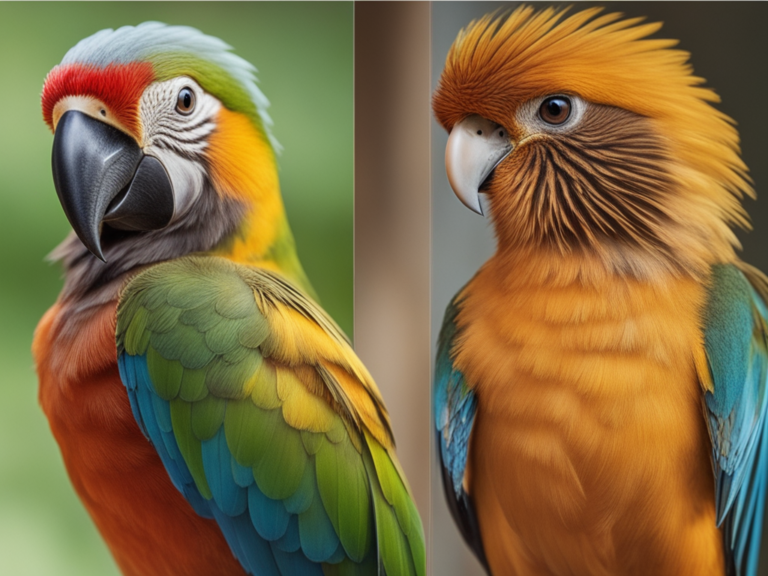Why Do We Communicate With Animals If They Can’t Understand Us

Why Do We Communicate With Animals If They Can’t Understand Us: Have you ever wondered why humans spend so much time communicating with animals, even though they can’t understand us? It may seem like a futile endeavor, but the truth is, there are several compelling reasons why we engage in this seemingly one-sided conversation. From expressing our emotions to establishing emotional connections, the act of talking to animals serves a deeper purpose than meets the eye. So, let’s explore the fascinating world of human-animal communication and unravel the mysteries behind this age-old practice.
Innate Desire for Connection
The innate desire for connection drives us to communicate with animals, even if they may not fully understand our human language. It is a natural instinct for humans to engage in conversation with animals, seeking companionship and emotional connection. We long for that sense of support and understanding, and sometimes, animals are the perfect companions to fulfill that need.
When we communicate with animals, especially our pets, we experience a profound emotional connection. They provide us with a sense of comfort and reduce feelings of loneliness. Talking to them allows us to express our emotions and thoughts without judgment, fulfilling our innate desire for emotional expression and connection. It’s as if they understand us on a deeper level, even if they can’t fully comprehend the words we say.
The language barrier doesn’t deter us from seeking understanding and bonding with animals. We know that they may not grasp the intricacies of our human language, but there is a mutual understanding that transcends words. It is the connection that matters most. We communicate through touch, body language, and the energy we share. Animals have an incredible ability to sense our emotions and respond with empathy, offering us solace and companionship in return.
In our human-animal relationships, communication becomes a vital component. It allows us to form strong bonds, create a sense of belonging, and fulfill our innate desire for connection. We may not always fully understand each other, but the connection we forge is meaningful and fulfilling. So, we continue to communicate with animals, knowing that the desire for connection is a powerful force that drives us to seek understanding and love, even across species.
Emotional Bond With Animals
You understand the deep emotional bond that can be formed between humans and animals. It’s a connection that goes beyond words and is rooted in non-verbal communication, mutual understanding, and empathy. Talking to your pets, even though they may not fully comprehend your words, is a testament to the intelligence and consciousness that exists in both you and your furry companions. This emotional bond provides comfort, companionship, and a sense of belonging for both parties involved.
Human-Animal Connection
Developing a deep emotional bond with animals can provide us with a sense of comfort and companionship. Even though animals may not understand our language in the same way humans do, there is still a strong human-animal connection that can be formed. When we communicate with our pets, they may respond in their own unique ways, such as cocking their heads or meowing. Speaking to animals helps create a sense of connectedness, reducing feelings of unpredictability and disconnectedness. It is interesting to note that when we talk to our pets, we often use a higher-pitched voice and simple sentences, similar to how we speak to babies. This human-animal communication provides us with companionship and can alleviate feelings of loneliness.
Non-Verbal Communication
Engaging in non-verbal communication with animals allows for the formation of deep emotional bonds, fostering a sense of companionship and understanding. Through body language, vocalizations, and other non-verbal cues, we can convey our emotions to animals and establish a connection based on trust and empathy. Non-verbal communication is essential for expressing affection and understanding an animal’s needs. By recognizing and responding to their non-verbal signals, we can establish mutual understanding and build a strong bond.
This form of communication goes beyond words and allows us to connect on an emotional level, developing a sense of companionship that transcends language barriers. It requires a high level of emotional intelligence (EQ) to interpret and respond to these non-verbal cues effectively. So, even though animals may not understand our words, they can feel our emotions and form a deep emotional bond through non-verbal communication.
Mutual Understanding and Empathy
To form a deep emotional bond with animals, it is crucial to understand and empathize with their unique ways of communication and emotional expression. Mutual understanding and empathy are the keys to truly connecting with our animal companions. It involves recognizing their individual needs, emotions, and behaviors. By observing and interpreting their body language and vocalizations, we can gain insight into their thoughts and feelings. Building a meaningful emotional bond with animals requires us to respect their individuality and form a connection based on trust and companionship.
It is important to engage in activities that cater to their physical, mental, and emotional well-being, fostering a sense of mutual understanding and empathy. When we communicate with animals, we bridge the gap between species and create a bond that transcends words.
Seeking Comfort and Companionship
When seeking comfort and companionship, talking to your pets is a natural instinct that can bring emotional connection and a sense of belonging. Engaging in conversation with your furry friend not only provides a source of comfort but also helps to alleviate stress and anxiety by providing an outlet for expressing your emotions. Through their companionship, pets like dogs can improve your mental well-being and create a sense of connectedness, reducing feelings of unpredictability and disconnectedness.
Emotional Connection
Talking to your pets not only provides emotional support and a sense of connectedness, but it also allows you to seek comfort and companionship in a judgment-free space. When you engage in conversation with your furry little friends, you create an emotional connection that goes beyond words. Sharing your thoughts and emotions with them helps reduce feelings of loneliness and unpredictability, strengthening the bond between you and your pets. They offer unconditional love and support, especially for those lacking social interaction.
By talking to them, you can express yourself freely without fear of judgment or interruption. This act of communication reflects our intelligence and our innate desire for emotional connection. So go ahead and continue talking to your pets; they are always there to listen and provide comfort.
Sense of Belonging
By engaging in conversation with your beloved pets, you can find solace and a deep sense of belonging. Talking to animals, especially your pets, provides a unique connection that brings comfort and companionship. Even though they may not understand the words you say, they can still sense your emotions and respond with love and affection.
This instinct to talk to animals reflects our natural desire for companionship and understanding. Pets, like dogs, can offer emotional support, especially for those who may lack social interaction. Speaking to your pets helps create a sense of connectedness and reduces feelings of unpredictability and disconnection. It is through these conversations that we express our love and strengthen the emotional bond with our furry friends.
Expression of Love and Affection
Expressing love and affection towards your pets not only strengthens the emotional bond between you, but also provides comfort, companionship, and a sense of connection in a sometimes unpredictable and disconnected world. While animals may not understand the words we say, they are able to learn and respond to our tone of voice, body language, and the overall energy we emit. Language might not be their forte, but they can still understand the expression of love and affection.
When you engage in conversation with your pets, whether it’s talking about your day or simply showering them with compliments, it creates a nurturing environment. Speaking to them in a higher-pitched voice and using simple sentences is similar to how people speak to babies, reinforcing the bond and nurturing behavior. This type of communication provides a sense of security and helps build trust between you and your furry companion.
Talking to your pets also provides companionship, especially for individuals who may lack social interaction. It reduces feelings of loneliness and gives you an outlet to express your thoughts and emotions without judgment or interruption. Just having someone to talk to, even if they can’t respond in words, can make a significant difference in your emotional well-being.
Moreover, pets, such as dogs, can provide emotional support and improve overall well-being through the act of talking to them. They offer unconditional love and understanding, which can be incredibly comforting during challenging times. By expressing your love and affection through conversation, you are not only strengthening your bond but also promoting a positive and enriching environment for both you and your pet.
Non-Verbal Communication Cues
Understanding non-verbal communication cues is essential when interacting with animals, as they often rely on body language, facial expressions, and vocal tone to convey their emotions and intentions. While animals may not understand our verbal language, they are adept at interpreting non-verbal signals. Research has shown that animals respond to non-verbal cues such as eye contact, gestures, and postures, which can communicate a range of emotions and intentions.
One important aspect of non-verbal communication with animals is body language. Animals can pick up on subtle cues in our posture and movements, which can indicate whether we are friendly, threatening, or assertive. For example, a relaxed and open posture can convey a sense of calm and trustworthiness, while a tense and closed-off posture can signal aggression or fear. Similarly, animals pay attention to our facial expressions, as they can reveal our emotional state. A warm and friendly expression can help put animals at ease, while a tense or fearful expression can make them feel anxious or defensive.
Vocal tone is another crucial non-verbal cue that animals pay attention to. The pitch, volume, and rhythm of our voice can convey a range of emotions, including affection, excitement, or anger. Animals are particularly sensitive to the tone of our voice, as it can indicate our intentions and level of threat. Speaking to animals in a calm and gentle tone can help establish trust and create a positive interaction.
It is worth noting that humans and animals share a common genetic basis for communication. The FOXP2 gene, which is present in both humans and animals, is involved in language and communication. While animals may not possess the same linguistic capabilities as humans, this shared genetic foundation suggests that there is a consensus among scientists that non-verbal communication cues are an integral part of how animals communicate and understand each other.
Therapeutic Benefits of Animal Interaction
Engaging in animal interaction can have profound therapeutic benefits for individuals. One way people experience these benefits is through talking to their pets. While pets may not understand the words we say, the act of communication itself can provide emotional support and a sense of predictability, especially in uncertain circumstances. It is fascinating to understand that communication with pets, regardless of the type, is considered a sign of intelligence and a reflection of our brain’s ability to recognize consciousness.
When we talk to our pets, we create a sense of connectedness. It reduces feelings of unpredictability and disconnectedness. Just like how we speak to babies, speaking to our pets is comforting and reinforces the bond we share with them. This interaction is not just one-sided; it is a reciprocal process that benefits both humans and animals.
The therapeutic benefits of animal interaction go beyond emotional support. Talking to pets can provide companionship and reduce feelings of loneliness. It has been shown to improve overall well-being by reducing stress, anxiety, and even blood pressure. The simple act of engaging with animals can bring joy and happiness into our lives.
In a world where human relationships can sometimes be complicated, our pets offer us unconditional love and acceptance. They provide a safe space where we can be ourselves without fear of judgment. So, even though they may not understand the words we say, the therapeutic benefits of animal interaction are undeniable. The ability to communicate with animals, even if it is through talking, is a special gift that brings comfort, joy, and healing to our lives.
Anthropomorphism and Projection of Human Emotions
When we attribute human emotions to our pets, we create a deeper sense of connection and understanding in our relationships with them. This tendency to anthropomorphize animals, especially our beloved pets, is rooted in our recent human evolution. As human beings, we have developed a highly complex and sophisticated brain that allows us to experience a wide range of emotions. Our ability to understand and relate to others’ emotions has been crucial to our survival and social interactions. It is only natural that we project these emotions onto our pets, as they are an integral part of our lives and often serve as sources of comfort and companionship.
Anthropomorphism provides us with emotional support, a sense of predictability, and a deeper connection with our pets. By attributing human emotions to them, we are better able to empathize with their experiences and respond to their needs. It allows us to form a bond that goes beyond mere companionship, creating a mutual understanding that transcends language barriers.
However, it is important to recognize the distinction between human emotions and animal behaviors. While our pets may display certain behaviors that resemble human emotions, it is crucial to remember that they have their own unique set of instincts and ways of communicating. By acknowledging and respecting their natural behaviors, we can ensure their well-being and maintain a healthy and balanced relationship.
Bonding Through Shared Experiences
Participating in activities together forms a stronger bond between humans and animals, fostering trust and understanding. Engaging in shared experiences such as playing, walking, or training can create a deeper connection between you and your animal companion. While animals may not comprehend our language, they can still understand and appreciate the time and effort we invest in them.
Take the border collie, for example. Known for their intelligence and high energy levels, these dogs thrive on mental and physical stimulation. By engaging in activities like agility training or playing fetch, you not only provide them with the exercise they need but also establish a bond based on shared experiences. Through these activities, you learn to communicate with each other through body language, cues, and rewards, building a foundation of trust and cooperation.
It’s not just dogs who benefit from shared experiences. Dolphins, known for their high brain size-to-body size ratio and emotional intelligence (EQ), also thrive on interaction and engagement. Swimming alongside dolphins or participating in training sessions can create a unique connection that transcends verbal communication. Through these shared experiences, you can develop an understanding of their behaviors and needs, fostering a harmonious relationship.
The bond formed through shared experiences goes beyond mere companionship. It promotes overall well-being for both humans and animals. By engaging in activities together, you provide mental stimulation, physical exercise, and emotional fulfillment. This shared investment in each other’s happiness and fulfillment creates a stronger bond, rooted in trust, understanding, and mutual respect.
Animals as Active Listeners
Through shared experiences, humans and animals form a strong bond based on trust and understanding, allowing for a unique form of communication that extends beyond verbal language. While animals may not comprehend human language in the same way we do, they possess the ability to perform as active listeners, responding to our communication in their own ways.
Research has shown that dogs, in particular, have the ability to process language similarly to humans. They can recognize familiar words and intonation, demonstrating their understanding as active listeners. This suggests that their brain was wired to interpret certain aspects of human language.
When you talk to your pets, they may not understand the exact meaning of your words, but they are attuned to your emotions and intentions. They respond to your body language, vocalizations, and the tone of your voice. Dogs, for instance, can sense your excitement, sadness, or frustration through the subtle cues you give off. They listen attentively, providing emotional support and companionship.
In fact, speaking to your pets in a higher-pitched voice and using simple sentences mimics the way people naturally communicate with babies. This reinforces the emotional bond and elicits a nurturing response from your furry friends. It allows you to express your thoughts and emotions without fear of judgment or interruption.
Communicating with animals can be a source of stress relief and companionship. Whether you confide in them about your day or simply talk to them as you go about your daily tasks, they are active listeners who offer comfort and a non-judgmental presence. So, even if they may not understand every word, their attentiveness, and empathy make them valuable companions in our lives.
Spiritual and Metaphysical Beliefs
In the realm of spiritual and metaphysical beliefs, there exists a deep understanding that animals possess a spiritual essence or consciousness that can be engaged with on a profound and intuitive level. According to a Scientific American article, many spiritual and metaphysical practitioners believe that animals have their own unique language of symbols, energy, and intuition that humans can tap into through telepathic communication. It is believed that animals are able to perform this form of communication because they have a heightened sense of awareness and a connection to the natural world that humans often lack.
By quieting the mind and tuning into our own intuition, we can establish a heart-centered connection with animals. Through this connection, we can learn to communicate with them and understand their needs, emotions, and messages. In the spiritual and metaphysical realm, communicating with animals is seen as a way to honor and respect the spiritual wisdom and interconnectedness of all beings in the natural world.
Engaging in communication with animals can offer spiritual guidance, healing, and insight into the interconnectedness of all living beings. It allows us to expand our consciousness and deepen our understanding of the world around us. By recognizing the spiritual essence and consciousness within animals, we can develop a greater sense of empathy and compassion towards them and all species.
Role of Animals in Our Lives
Animals play a significant role in our lives, providing emotional support, companionship, and a sense of connection in an ever-changing world. While it may seem puzzling to communicate with animals who can’t understand us, the truth is that this interaction serves a profound purpose.
Humans have a natural inclination to anthropomorphize animals, especially our beloved pets. We see them as family members, and in return, they offer us emotional support and predictability, which brings us comfort. The act of talking to our pets, even though they may not understand every word, strengthens our emotional bond with them.
Interestingly, pets respond to human communication in their own unique ways. Dogs, for instance, process language similarly to humans, displaying a remarkable understanding of our words and tone. This ability to communicate with animals is considered a sign of intelligence and mirrors our brain’s capacity to recognize consciousness in others.
When we talk to our pets, it goes beyond mere words. It is an expression of our love and care, creating a profound sense of companionship. In an ever-changing world, where relationships can feel fleeting, the bond we have with our animals provides us with a constant source of connection and understanding.
Additionally, communicating with animals, even in a baby-like manner, elicits a caretaking response. It is similar to how we speak to babies, triggering our nurturing instincts and reinforcing the deep bond we share with our pets.
Furthermore, talking to animals can be a form of stress relief. It serves as an outlet for expressing our emotions, improving our overall well-being. It helps us feel more connected and understood, particularly for individuals who may lack social interaction.
Why Do We Communicate With Animals If They Can’t Understand Us Frequently Asked Questions
Why Do Humans Talk to Animals if They Can’t Understand?
Talking to animals, even if they can’t fully understand, has its benefits. It creates an emotional connection between you and your pet, strengthening the bond. It’s a way to express love and care.
What Is the Purpose of Communication in Animals?
Communication in animals is important for survival and social interaction. It allows them to convey signals, establish dominance, find mates, and warn others of danger. This evolutionary advantage helps them navigate their environment and ensure their survival.
Why Are We the Only Animals That Can Talk?
You communicate with animals because it gives you an evolutionary advantage. Your cognitive abilities allow you to understand their vocalization patterns, forming a unique bond. Despite their limited understanding, the connection brings you joy and fulfillment.
Why Can Humans Talk but Animals Cannot?
Humans can talk because of the evolution of our language skills and vocalization mechanisms. While animals have their own ways of communication, they can’t understand our language. We communicate with them for emotional connection and companionship.
Conclusion
In conclusion, communicating with animals, even if they can’t fully understand our words, is an innate desire for connection and emotional bonds. It provides comfort, and companionship, and strengthens the bond between humans and animals. Through non-verbal cues and shared experiences, we can express our love and affection. Animals may not comprehend our language, but they are active listeners and can understand our tone and body language. In addition, animals hold spiritual and metaphysical beliefs that enrich our lives. Overall, communicating with animals enhances our well-being and deepens our connection with the natural world.








